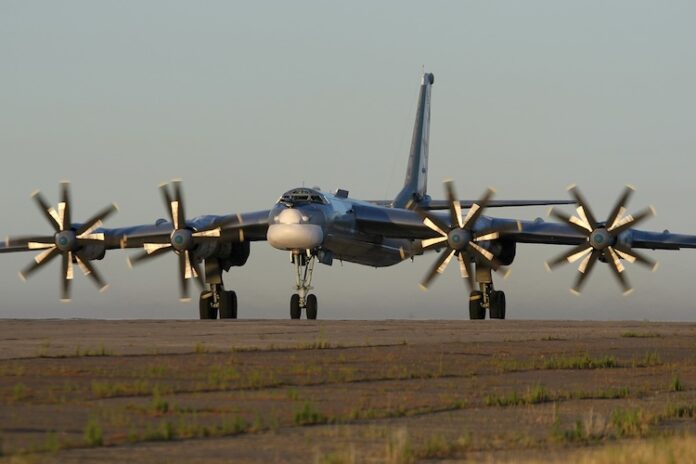
Y Дорогие российские друзья, мы рады приветствовать вас в нашем регионе (Dear Russian friends – we welcome you to our region!).
By Tim Coyle*
A tongue-in-cheek greeting to a Russian move to establish a military presence in a near regional country from an Australian government confident in the competence of its Foreign Affairs Department and the Australian Defence Force’s capability to exercise a high degree of Intelligence, Surveillance and Reconnaissance (ISR) against extra-regional powers.
Improbable though such a reaction might be, there is no reason why the ADF shouldn’t be able to deal with a Russian incursion into our area of direct military interest. The 2023 Defence Strategic Review and subsequent Updates clearly state the challenge to our national security. President Putin has declared a ‘no limits’ relationship with the People’s Republic of China (PRC) and has demonstrated this with Russian Federation ships and aircraft engaging in combined exercises and joint incursions into Japanese Air Defence Interception Zones and maritime boundaries.
Putin’s strategic aim is to resuscitate Russia on the world’s stage and restore its prestige and standing which was lost in the collapse of the Soviet Union – an event he described as ‘the greatest tragedy of the 20th century’.
The PRC’s strategic aim is, under the guidance of President Xi, to establish the PRC as the world’s hegemon, overcoming the ‘century of shame’ experienced by China in the 19th and early 20th century under European (and Japanese) rapacity. It ultimately wants to force the US out of the region and break up the alliances formed with Japan, Suth Korea, the Philippines and Australia.
Suddenly, Australia is shattered from its torpor, by three PRC-related incidents. The first was a People’s Liberation Army Navy flotilla circumnavigation of the Australian continent.
In my ANI article Operation Kitay; What Might Have Happened – navalinstitute.com.au/operation-kitay-a-story-of-what-might-have-happened/- your humble scribe attempted to paint an operational picture of how the defence force of an unnamed very large island country might have used its extensive ISR capabilities to wring intelligence and operational product from the transit and demonstrate to the interlopers a disciplined and competent response, which they would have respectfully noted.
Next a mysterious PRC research ship appeared. It had cooperated with New Zealand scientists in a research project with which the Kiwis were highly delighted. Then, suspiciously, the ship exited our region not by the shortest route home but by traversing the Great Australian Bight. The political and media chattering classes squarely set the cat among the pigeons by speculating on the ship’s subsequent, and likely, devious covert mission.
Jennifer Parker in her article The Chinese Spy Ship That Wasn’t – navalinstitute.com.au/the-chinese-spy-ship-that-wasn’t – demolished the conspiracy theories through her expert knowledge of undersea warfare. Doubtless the PRC authorities were smirking that the ‘spy ship’ had again caused such consternation in the naïve Australian political and media circles.
And so, we come to the trifecta (or ‘troika’ in Russian!) – handily occurring in the middle of an election campaign. The respected Jane’s Defence Weekly reported that the Russian side, in talks with the Indonesian Government, had canvassed the possibility of Russian aircraft ‘basing’ at Manuhua Air Force Base at Biak Numfor in the Indonesian province of Papua. Frantic calls by the Australian Defence Minister to his Indonesian counterpart resulted in a denial that such an agreement was contemplated. There the matter should have rested (for now); however, the Opposition Leader couldn’t resist conflating it, demanding to know what the government did, or didn’t, know of the discussion, linking it with a non-existent statement by the Indonesian president. He embarrassingly back tracked having been accused of ‘verballing’ the Indonesian president.
The aircraft type the Russian Federation would likely deploy to a near-regional country for ‘basing’ – whether semi-permanently or as a transit and staging point – would be the venerable and mighty Tupolev Tu-95 strategic bomber or its maritime patrol variant, the Tu-126 ‘Bear’ . These aircraft have phenomenal ranges – up to 15000 kms and are superb examples of the Tupelov Design Bureau of 1952 and straight out of the Dr Strangelove era. A crew of 10 includes such vintage crew positions as flight engineer, navigator and radio operator to manage the voluminous analogue systems which would delight any vintage aircraft enthusiast. They would be fine tracking targets for the ADF’s excellent Jindalee Operational Radar Network and P-8 Poseidon Maritime Patrol Aircraft.
Of course, this is not to say Australia, and the ADF, should not take note of a potential future attempted Russian military presence in our region and plan accordingly. We should maturely face these contingencies – that’s what the ADF is tasked to do.
NATO forces have countered the Soviet/Russian air and maritime forces for decades in the Atlantic, the Baltic and the far North; it’s routine for them. Australian political leaders must resource our Defence and Foreign Affairs agencies appropriately to counter foreign military activity in our region in a mature and dignified manner. Opponents will well note a strong and well-resourced ADF response; hysterical political overreach will only diminish Australia’s international standing.
Tim Coyle is a former Defence intelligence analyst



